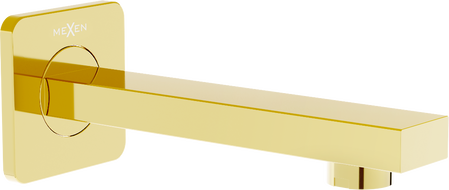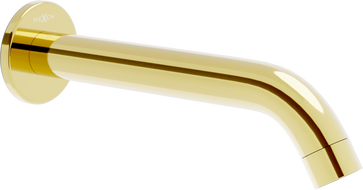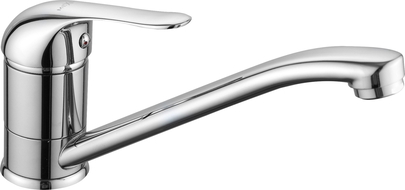
Sanitary fixture stores boast a wealth of designs, colors, and shapes of kitchen faucets. We increasingly come across products made from various materials and in different styles. Eye-catching faucet models with futuristic shapes are equipped with accessories that facilitate kitchen work. The choice of a faucet should be considered, especially when designing a kitchen with an island or installing a sink in an unusual location. What type of faucet should one choose? How to match the shape of the spout to our needs and the sink we have?
The Shape and Size of the Spout in the Kitchen Faucet Matters
Parameters to pay attention to include the height, shape, and length of the spout, as they are decisive factors for the comfort of using the kitchen faucet. It is important for it to have a wide reach that allows comfortable work in both sink basins. The height of the spout is also significant and should be adjusted to the dimensions of the sink. A spout that is too low will make it difficult to wash large dishes or fill tall buckets or bottles with water. A high spout allows for greater freedom of movement in the washing area but can cause water to splash. A spout that is too short will not direct water to the center of the basin, which can cause discomfort while washing or lead to flooding the kitchen countertop.
What Shape Can a Kitchen Faucet Have?
The spout of a faucet can take the shape of letters L, C, S, U, and F. Those in the shape of L and F are the most popular and tallest in their class because they fit a standard sink with a basin depth of 12 - 14 cm. Lower spouts, such as S or C, work well with a basin deeper than 14 cm. It's worth following the principle that for a deep and wide sink, it's better to choose flat spouts, and for smaller, shallower ones, arched spouts. This will allow for precise direction of the water stream into the center of the sink and prevent flooding the kitchen countertop.
Flexible spouts (resembling a hose in the shape of an inverted letter J) that can "memorize" their set position are extremely fashionable. There are also flat spouts on the market that emit a wide stream of water. However, due to their rather short spout, these products are more often used with bathtubs or washbasins.
Kitchen Faucets - What Else to Pay Attention to When Buying?
The shape and reach of the chosen spout must also consider the size and construction of the sink, the depth of the basins, and the placement of the faucet relative to windows or hanging kitchen cabinets. It is also important for the spout to be easy to keep clean. Naturally, when choosing a spout, we primarily consider the ergonomics and functionality of the fixtures, but visual aspects are increasingly important as well.
Therefore, let's also think about the appropriate color of the faucet's spout to match the room's color scheme and style. This is not difficult, as manufacturers offer spouts in various colors. Skillfully combining all aspects will make the kitchen an impressive room and ensure comfort in use.
Criteria for Choosing Kitchen Faucets Based on Installation Method
An essential criterion for selecting a faucet for each kitchen is the method of its installation. We can distinguish between wall-mounted and standing (also known as deck-mounted) kitchen faucets:
- wall-mounted faucets - attached to the hot and cold water outlets coming directly from the wall. The popularity of this solution is declining. The offer is primarily aimed at customers who are replacing an existing tap with a new one without remodeling the water system. To replace a wall-mounted faucet with a standing model, a renovation of the approach is necessary, which involves a major kitchen refurbishment.
- standing faucets - these are more modern models mounted in a countertop hole or on the edges of the sink. Hot and cold water is supplied through flexible connections attached to the faucet. Replacing this type of faucet with another model does not pose major problems, as its size and the diameter of the prepared holes are standardized.
Additional, Convenient Features of Spouts
A sink faucet must be practical. The functionality of the fixtures is often determined by the spout equipped with features that make using the tap easier. One example is a faucet with a pull-out spout that allows the stream to be directed anywhere. A pull-out spout also enables filling containers outside the sink basin. A practical element that helps save water is a aerator. It is a small mesh located at the end of the spout. The stream of water passing through the aerator is aerated, reducing flow and thus saving water.
Thermostatic faucets provide great comfort and energy and water savings. Special knobs set the flow and temperature of the water. The most modern ones are equipped with original displays showing the water temperature. Currently, touchless faucets are also available on the market, which activate when an object, such as a hand, is nearby. They are very economical. However, this type of fixture is rarely used above sinks, more often in bathrooms, especially in public utility facilities.























